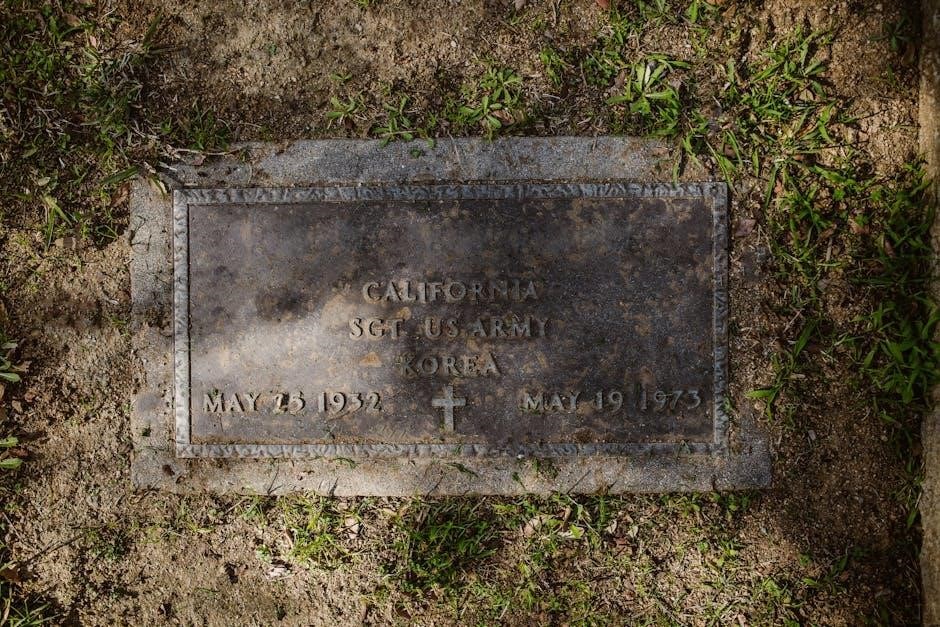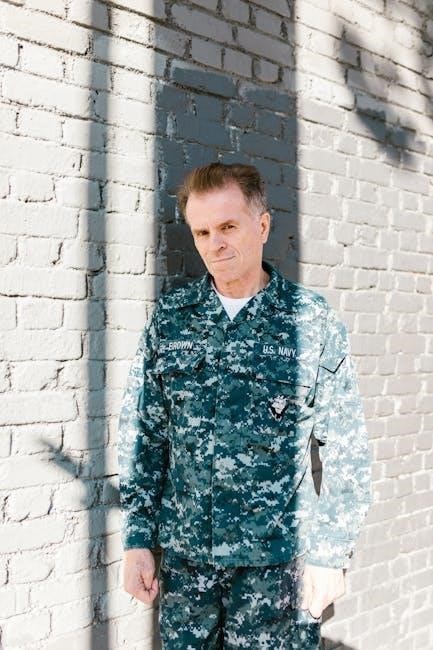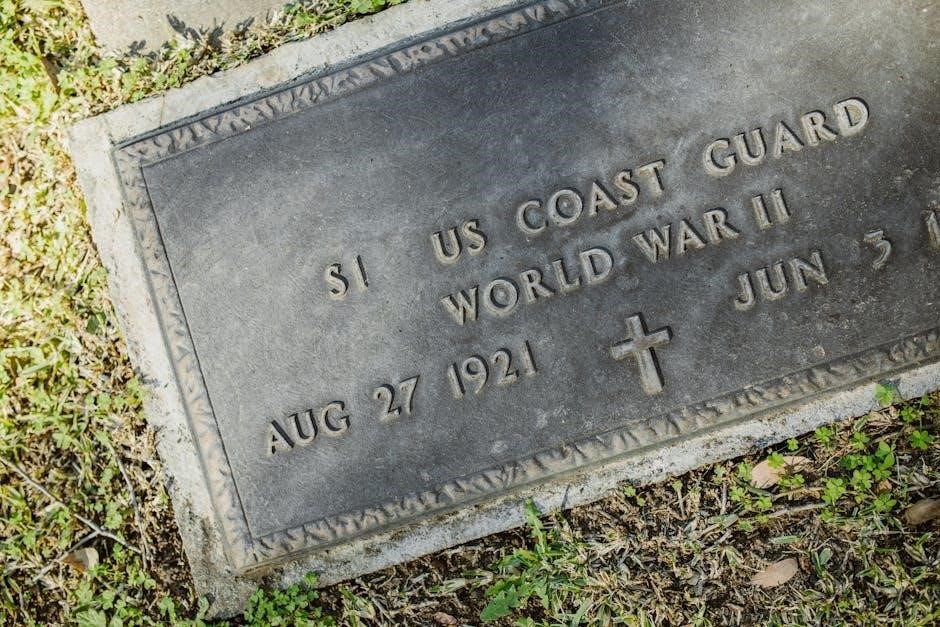
the sacrifice pdf
The Sacrifice (1986 film) PDF Analysis

The Sacrifice (1986 film) PDF Analysis
This analysis delves into Andrei Tarkovsky’s “The Sacrifice,” exploring its themes of faith and sacrifice against the backdrop of a potential nuclear apocalypse. The film is a parable, prompting reflection on humanity’s self-destructive path and the need for spiritual rediscovery.
Overview of Andrei Tarkovsky’s “The Sacrifice”
Overview of Andrei Tarkovsky’s “The Sacrifice”
Andrei Tarkovsky’s “The Sacrifice,” his final film, presents a profound and simple narrative centered around the threat of World War III. The film follows Alexander, who, upon hearing news of an impending nuclear apocalypse, makes a desperate vow to God. He promises to sacrifice everything he holds dear if the world can be spared from destruction.
The film explores themes of faith, sacrifice, and the potential for redemption in the face of existential dread. It serves as a parable, urging mankind to abandon its destructive tendencies and rediscover spirituality. “The Sacrifice” delves into the desperation and fear that grip individuals when confronted with extreme uncertainty.
Alexander’s vow sets in motion a series of events that challenge his beliefs and force him to confront the meaning of his existence. The film masterfully portrays the emotional turmoil and the overwhelming feeling of sadness that permeates the realization of humanity’s potential self-destruction. Tarkovsky’s work is a final plea, a warning to reconsider our course and embrace a path of spiritual awakening.
Thematic Exploration of Sacrifice and Faith
Thematic Exploration of Sacrifice and Faith
“The Sacrifice” intricately examines the intertwined themes of sacrifice and faith as potential responses to global crisis. The film’s central narrative revolves around Alexander’s profound vow, highlighting the concept of making the ultimate, selfless sacrifice for the well-being of loved ones and humanity as a whole. This act underscores the depth of his faith, a belief that such a sacrifice can alter the course of impending disaster.

Tarkovsky masterfully portrays faith not merely as religious adherence, but as a powerful force capable of driving individuals to extraordinary measures. Alexander’s decision to offer everything demonstrates a willingness to embrace the “Leap of Faith,” trusting in a higher power’s ability to intervene.
The film also delves into the nature of sacrifice itself, exploring its meaning and implications. Alexander’s intended sacrifice raises questions about the value of material possessions and personal comfort in the face of global catastrophe. It challenges viewers to consider what they would be willing to relinquish to avert destruction, prompting reflection on the true meaning of sacrifice. Through these thematic explorations, “The Sacrifice” urges viewers to contemplate the potential of faith and selflessness to redeem a world teetering on the brink.
Nuclear Apocalypse and Existential Dread
Nuclear Apocalypse and Existential Dread
Andrei Tarkovsky’s “The Sacrifice” vividly portrays the pervasive sense of existential dread that accompanies the threat of nuclear annihilation. The film taps into the anxieties of the Cold War era, where the fear of imminent global destruction loomed large in the collective consciousness. The characters grapple with the potential end of civilization, confronting the fragility of human existence in the face of such overwhelming power.
The unsettling news report announcing the onset of World War III throws Alexander and his family into a state of profound despair. This event serves as a catalyst, forcing them to confront their mortality and the meaninglessness of their lives should everything be destroyed. The film meticulously captures the emotional turmoil experienced by individuals facing extreme uncertainty, highlighting their desperation and fear.
“The Sacrifice” explores how the characters attempt to cope with this existential dread. Some turn to faith, others to denial, and some are simply paralyzed by fear. The film masterfully depicts the psychological impact of impending doom, showcasing the various ways in which individuals react when confronted with the potential end of everything they know. Through this exploration, Tarkovsky prompts viewers to consider their own responses to such a crisis.
Alexander’s Vow and Bargain with God
Alexander’s Vow and Bargain with God
In the face of impending nuclear catastrophe, Alexander, the protagonist of “The Sacrifice,” makes a desperate vow to God. Overwhelmed by the news of the impending apocalypse, he promises to sacrifice everything he holds dear in exchange for the salvation of his family and the world. This act of desperation highlights the profound sense of helplessness and the yearning for divine intervention during times of crisis.
Alexander’s vow signifies a willingness to relinquish his material possessions, his comfortable life, and even his own sanity in an attempt to avert disaster. His bargain with God represents the ultimate act of selflessness, demonstrating the lengths to which a person will go to protect their loved ones and preserve humanity. He is ready to undertake the Leap of Faith.
The specifics of Alexander’s vow, including the promise to remain silent and to abandon his former life, add a layer of complexity to his character. His commitment to fulfilling his bargain underscores the power of faith and the willingness to embrace sacrifice in the face of overwhelming adversity. The implications of this bargain and its impact on Alexander form a central theme of the film.
Burning the House: Symbolism and Interpretation
Burning the House: Symbolism and Interpretation
The climactic act of Alexander burning his house in “The Sacrifice” is laden with symbolism and open to various interpretations. This drastic action, undertaken to fulfill his vow to God, represents a complete renunciation of his past life and a commitment to a new path. The house, filled with artifacts and memories, embodies Alexander’s attachment to the material world and his former identity.
By setting it ablaze, he symbolically destroys these ties, signifying a spiritual purification and a detachment from worldly possessions. The burning of the house can also be interpreted as a sacrifice of his comfort and security, a demonstration of his unwavering faith. The physical collapse of the house mirrors a narrative of collapse and the end of a family line.
The act of burning also serves as a visual representation of the destructive forces that threaten humanity. The flames consume not only the house but also the symbols of a life lived before the impending apocalypse. This destruction highlights the urgent need for change and a willingness to abandon old ways in pursuit of spiritual redemption; The act serves as a warning to mankind.
The Film as a Parable of Redemption
The Film as a Parable of Redemption
“The Sacrifice” functions as a profound parable, exploring the themes of faith, sacrifice, and the potential for human redemption. The film presents a scenario where the world teeters on the brink of nuclear annihilation, prompting Alexander to make a desperate vow to God. This vow, involving significant personal sacrifice, underscores the film’s central message: that through faith and selflessness, humanity can overcome its destructive tendencies.
Alexander’s actions serve as a symbolic representation of the sacrifices required to achieve redemption. He offers his life as a sacrifice, if only his family can be spared. The narrative suggests that by embracing spirituality and abandoning materialism, individuals can contribute to the salvation of the world. The film invites viewers to contemplate the nature of sacrifice and its power to bring about positive change.
The parable highlights the importance of recognizing our collective responsibility for the state of the world and the need to actively work towards a better future. It encourages a shift in perspective, urging us to prioritize spiritual values over material pursuits and to embrace acts of selflessness as a means of achieving personal and global redemption. The film is a religious one whose surface story is about undertaking the Leap of Faith.
Tarkovsky’s Final Plea to Humanity
Tarkovsky’s Final Plea to Humanity
“The Sacrifice,” as Andrei Tarkovsky’s final cinematic offering, stands as a poignant and urgent plea to humanity. The film serves as a warning against the dangers of self-destruction, urging viewers to reconsider their values and priorities. Tarkovsky uses the looming threat of nuclear annihilation to highlight the precariousness of human existence and the urgent need for change.
The film implores humanity to abandon its destructive course and rediscover spirituality. Tarkovsky suggests that by embracing faith, compassion, and selflessness, we can avert disaster and create a more harmonious world. The narrative emphasizes the importance of individual responsibility in shaping the collective future. Each person’s choices and actions contribute to the overall trajectory of humanity.
Through Alexander’s sacrifice, Tarkovsky presents a model for transformative action. Alexander’s vow underscores the idea that profound change requires a willingness to relinquish personal desires for the greater good. “The Sacrifice” is a call to action, urging viewers to examine their own lives and to commit to making a positive impact on the world. It serves as a testament to Tarkovsky’s deep concern for the future of humanity and his belief in the power of the human spirit to overcome adversity.
Critical Reception and Lasting Impact
“The Sacrifice,” while not as widely celebrated as some of Andrei Tarkovsky’s earlier masterpieces, has nonetheless garnered significant critical attention and left a lasting impact on the world of cinema. The film’s complex themes, deliberate pacing, and striking visual style have been both praised and debated by critics and scholars alike. Some have lauded its profound exploration of faith, sacrifice, and the human condition, while others have found it to be challenging and at times impenetrable.

Despite varying interpretations, “The Sacrifice” is widely recognized as a powerful and thought-provoking work of art. Its exploration of existential themes resonates with audiences even today, prompting reflection on the meaning of life in the face of potential global catastrophe. The film’s visual language, characterized by long takes and meticulously composed shots, has influenced numerous filmmakers.
The film continues to be studied and analyzed in film schools and academic circles, solidifying its place as a significant work of cinematic art. Its enduring relevance stems from its exploration of timeless human concerns, making it a film that continues to provoke thought and inspire discussion. “The Sacrifice” remains a testament to Tarkovsky’s artistic vision.
The Film’s Relevance to Contemporary Issues
Andrei Tarkovsky’s “The Sacrifice,” though created in the shadow of Cold War anxieties, retains a striking relevance to contemporary issues facing humanity. The film’s exploration of existential dread in the face of potential global catastrophe resonates deeply in an era marked by climate change, political instability, and the ever-present threat of nuclear conflict. The film is mostly concerned with the daily reality of death that permeates our existence.

The film’s central theme of sacrifice, both personal and collective, offers a powerful framework for considering our responsibilities to future generations. Alexander’s vow to God reflects a desperate attempt to avert disaster, prompting viewers to contemplate the sacrifices they are willing to make to ensure the survival of humanity and the planet.
Furthermore, “The Sacrifice” underscores the importance of spirituality and a rejection of self-destructive tendencies. In a world increasingly driven by materialism and technological advancement, Tarkovsky’s film serves as a poignant reminder of the need to reconnect with our inner selves and embrace values that transcend individual gain. The narrative of physical collapse serves as a warning for our times.
Analysis of Characters’ Feelings and Motivations
In “The Sacrifice,” Andrei Tarkovsky masterfully portrays a range of complex emotions and motivations that drive the characters’ actions in the face of impending doom. Alexander, the protagonist, embodies a profound sense of existential anguish and desperation. His vow to God stems from a deep-seated fear of nuclear annihilation and a desperate desire to protect his family. His willingness to sacrifice everything reflects a profound love and a yearning for redemption.
The other characters, each grappling with their own fears and uncertainties, contribute to the film’s emotional depth; Alexander’s wife, Adelaide, displays a mixture of fear, denial, and resentment, struggling to comprehend the gravity of the situation. Their children, Marta and Little Man, represent innocence and vulnerability, highlighting the devastating consequences of nuclear war on future generations.
Otto, the postman and a self-proclaimed intellectual, provides a contrasting perspective, offering philosophical insights and a sense of detachment. His motivations are driven by a desire to understand the world and find meaning in the face of absurdity; The characters’ interactions reveal the complex interplay between fear, love, faith, and reason in a world teetering on the brink of destruction.